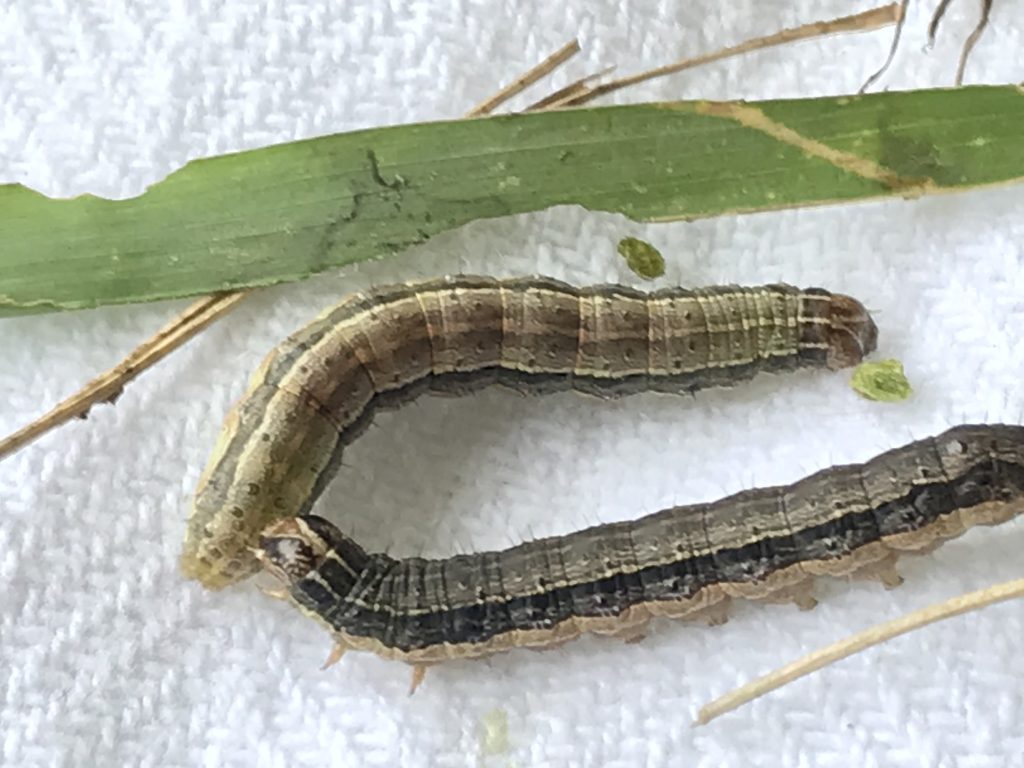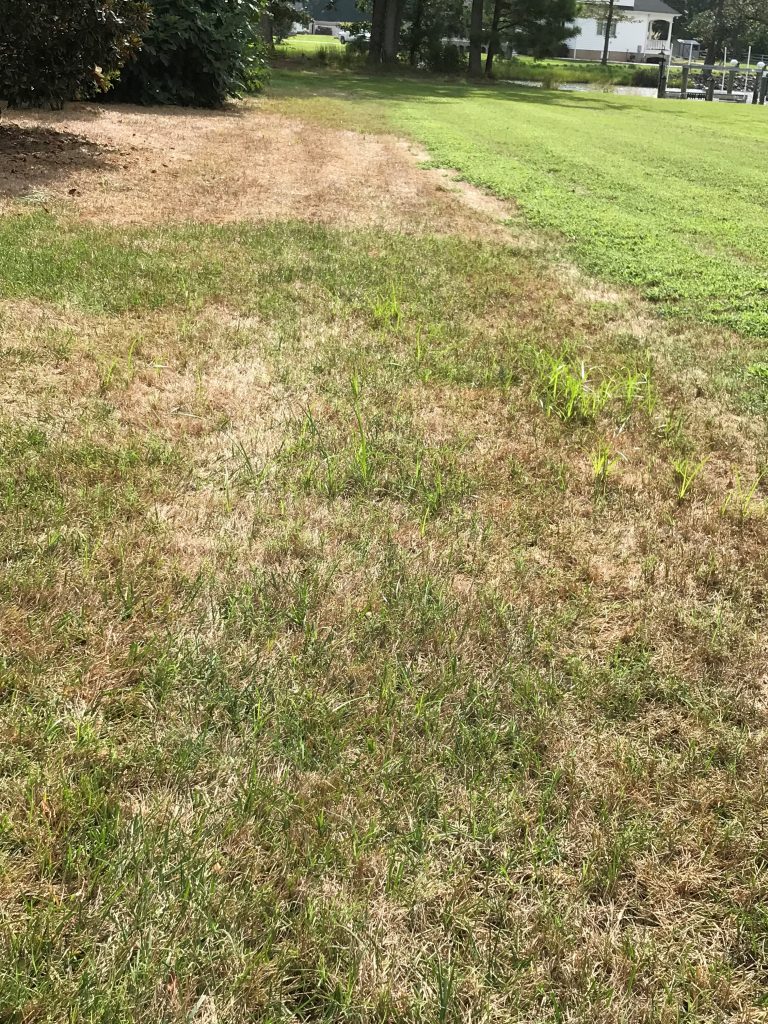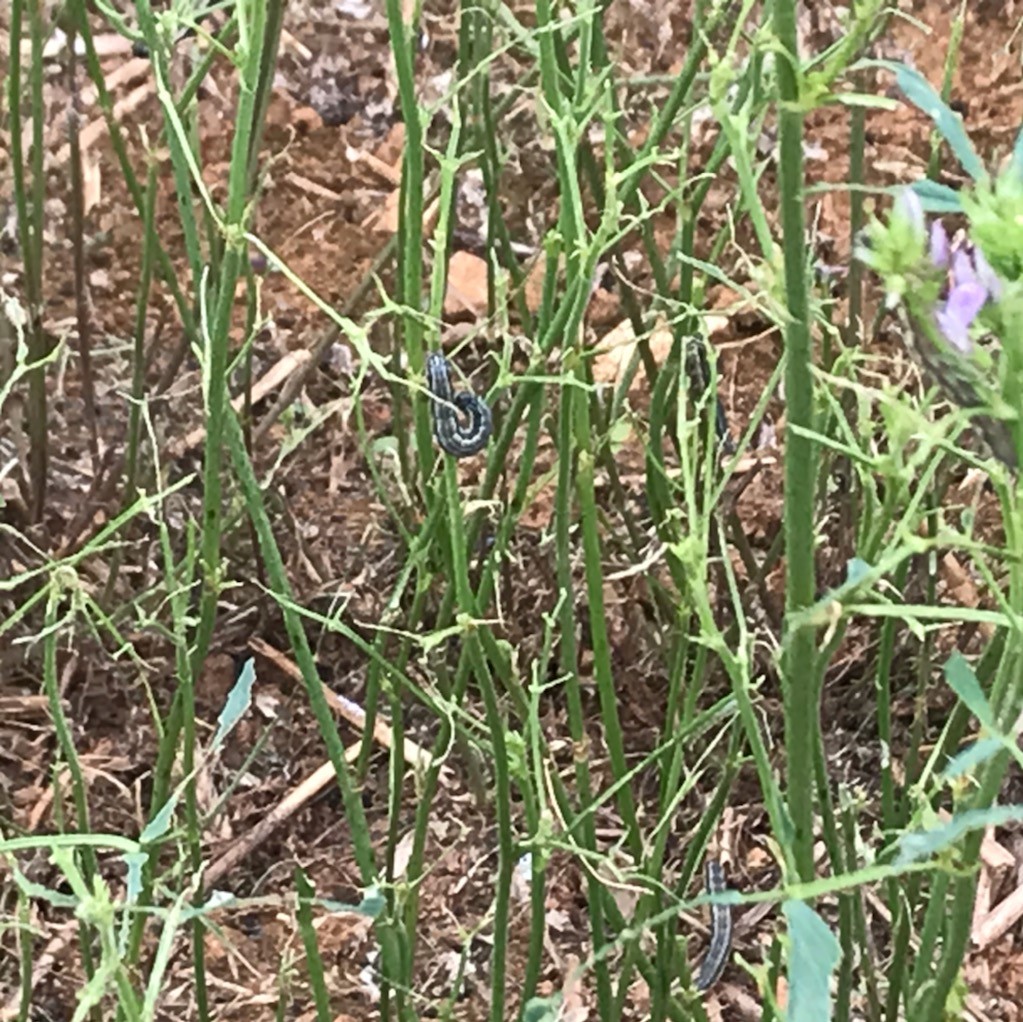By: Tom Kuhar, Alejandro Del Pozo, and Sally Taylor
Virginia Tech Department of Entomology
In the past week, many areas of Virginia have experienced severe outbreaks of fall armyworms (FAW), which have completely destroyed lawns, sod plantings, hayfields, and alfalfa fields. As you would imagine, we have gotten a lot of calls about these pests. We’ve included some of the FAQ below.


- Who’s being harmed the most by armyworms?
Lawns with turf-type fescue grass are being hit the hardest across Virginia. Alfalfa and hayfields are also being attacked.

2. What crops are at risk?
While FAW are known to attack a number of crops such as grasses, small grains, corn, sorghum, soybean, and vegetables, this particular strain of FAW seems to be a bit more selective. Several people have reported FAW only eating the fescue grass and leaving behind crabgrass and other plants and weeds. Kentucky bluegrass, and Zoysiagrass for example have not appeared to have been damaged. There have also been very few reports of FAW in late-planted sweet corn, which is often a magnet for FAW. So, we are not sure exactly what crops might be at risk from this current strain of FAW. We are advising to keep a close watch on all susceptible host plants.
3. Does climate change play a role in spreading armyworms? If so, how?
Fall armyworms are tropical moths. They cannot survive cold winters. With climate change, it is possible that these moths are overwintering a little further north than usual. If climate change leads to dry (drought) conditions in the southern states, then high densities of these moths can build up. When storm winds blow north, they carry the moths to the mid-Atlantic, northeast, and Midwestern states.
4. What do you think the rest of the year will look like in terms of armyworms? Is the worst behind us or yet to come?
Great question. The fall armyworm will complete a full generation of its life cycle (egg-larvae-pupa-adult moth) in about 30-40 days, depending on weather conditions. This fall armyworm outbreak occurred early enough for the moth population to still cycle through another generation here in Virginia, meaning more eggs might be deposited on lawns and more devastation from larval feeding may occur. However, FAW are very susceptible to disease that occurs after wet rainy conditions, which we’ve also experienced. So, we may see things go either direction. Still don’t know.
5. Have there been previous years where we’ve seen a similar explosion in army worms? Is this going to be the ‘new normal’ having FAW every year?
We last had a fall armyworm outbreak in 2018. It was not as severe. This is the worst FAW devastation that I’ve seen in Virginia in my 30-year career in entomology. We still do not know if we might have another huge outbreak of FAW in 2022. All we know that some insect pests have cycles between outbreak. It could be possible that with warmer and dryer conditions, we might see FAW being present in higher number during the upcoming years. Now we know that this creature can come in Virginia as early as late-August. Scouting for this pest will be still crucial.
6. What can you do about them?
If lawns have been killed, the only recourse is to reseed the lawn this fall. If new fall cover crop plantings have been devoured, then reseeding those also may be the only recourse. For crop protection, insecticides recommended for control include most pyrethroids (active ingredients such as bifenthrin [in the products Talstar, Brigade, Sniper, and many others]), lambda-cyhalothrin, and commercial products such as Mustang Max, Baythroid XL, and others), the carbamate, Lannate LV, and many of the more selective (lepidopteran-targeting) insecticides such as the diamides Prevathon, Coragen, Acelepryn, Besiege, indoxacarb products like Steward, Avaunt eVo, Provaunt, the active ingredient spinosad (in products such as Blackhawk, Tracer, Matchpoint), and other products including Radiant, or Intrepid Edge. Consult the relevant Pest management Guide for specific recommendations on the various commodities. Please note that control of large larvae may be difficult with any insecticide. Link to the VCE Pest Management Guides for Field Crops, Vegetables, and Turf are provided below. On turf, we have gotten very good control of FAW larvae with pyrethroids, which are also one cheaper insecticide options. Golf course turf treated with a systemic diamide insecticide like Acelepryn or Tetrino have shown no damage even after 50 days post-spray.
Links to Pest Management Guides https://resources.ext.vt.edu/
Turf:
Field Crops:
Vegetables:
